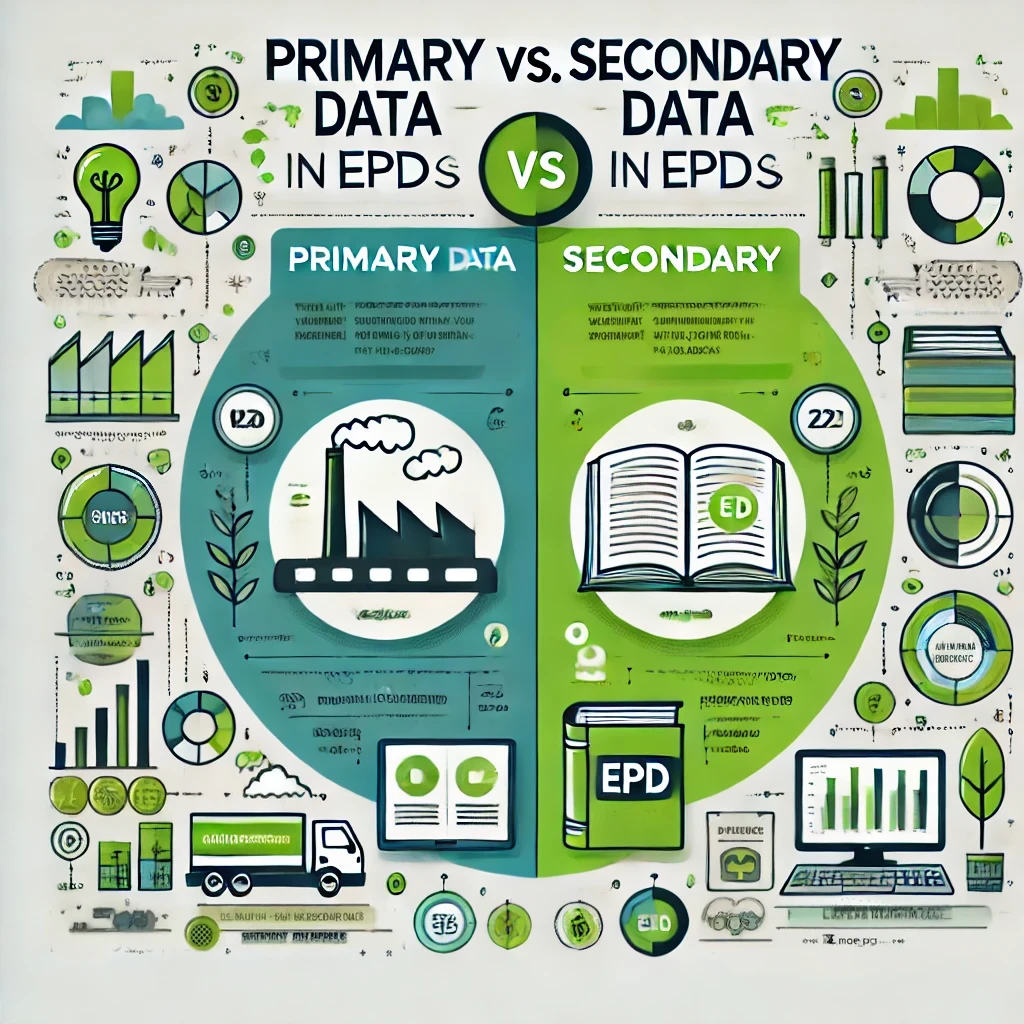Primary and Secondary Data in EPD Preparation
When preparing an EPD, primary and secondary data are crucial for accurately calculating a product’s environmental impacts. Here are the key differences between these two types of data:
1. Primary Data
Definition:
Primary data refers to original data collected directly from a product’s manufacturing processes.
Characteristics:
- Source: Obtained from manufacturer-specific processes or direct field measurements.
- Originality: Includes data on energy use, material consumption, emissions, and waste generation throughout the product’s life cycle.
Examples:
- The amount of energy consumed in the production facility.
- The quantity of waste generated during manufacturing.
- The type and amount of fuel used for transporting raw materials to the factory.
Advantages:
- Provides more accurate and reliable results.
- Directly reflects the product’s environmental impact.
Usage:
- Used in the main calculations of the EPD.
- Essential for Life Cycle Assessment (LCA) studies.
2. Secondary Data
Definition:
Secondary data refers to average values obtained from general databases or scientific literature.
Characteristics:
- Source: Comes from life cycle databases such as Ecoinvent, GaBi, and SimaPro, or industry reports.
- Generalization: Not specific to a particular product or production process; represents sectoral or regional averages.
Examples:
- General energy consumption for steel production.
- The carbon dioxide emission factor of an electricity grid.
- Average emission values during raw material extraction.
Advantages:
- Serves as a reference when primary data is unavailable.
- Provides regional or industry-wide information.
Usage:
- Used as supporting information when primary data is incomplete.
Comparison of Primary and Secondary Data
| Criteria | Primary Data | Secondary Data |
|---|---|---|
| Source | Directly from manufacturing processes | From databases or literature |
| Accuracy | More precise | More generalized |
| Product Specificity | High | Low |
| Scope | Factory and production-specific | Regional or sectoral |
| Purpose | Main LCA calculations | Supporting data |
Using Primary and Secondary Data Together
- Primary Data: Preferred for ensuring accuracy and reliability in EPDs.
- Secondary Data: Used to fill gaps when primary data is missing.
Conclusion
Primary data enhances the accuracy of an EPD by providing product-specific information, while secondary data supports it with sectoral or regional generalizations. A balanced and accurate use of both data types is essential for a comprehensive assessment of a product’s environmental impact.


